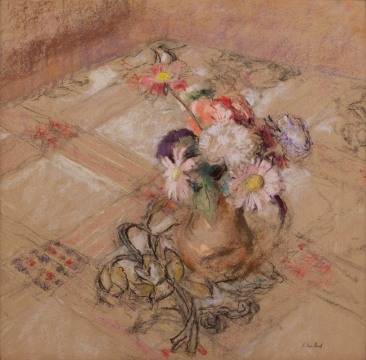
Born in Lyon, Adolphe Appian (1819-1898) began his art studies by specializing in fabric and textile decoration. He was so skillful that he was sent to Paris to train as a painter. Here he met and befriended Charles-François Daubigny and Camille Corot, beginning his path to becoming a disciple of the Barbizon School. In 1853, he exhibited two works at the Paris Salon, one of which was a large charcoal drawing deemed "fusainiste," a master charcoal drawing, by critics. By the 1860s he was a sought-after printmaker, as the popularity of the medium gained traction and the public began collecting etchings, engravings, and other prints. His work was soon regularly published by the Société des Aquafortistes and his reputation grew. In 1867 two of his works were purchased by Napolean III and Princess Mathilde, his niece, establishing Appian as one of Paris' leading artists.
Throughout his career he was awarded with several gold medals in drawing, painting and printmaking, and he was elected a Chevalier of the Legion d'Honneur. Today he is perhaps best known today for his rich, heavily worked charcoal drawings of landscapes that mark the beginning of a movement in that medium, later seen in the drawings of Courbet and Seurat.
